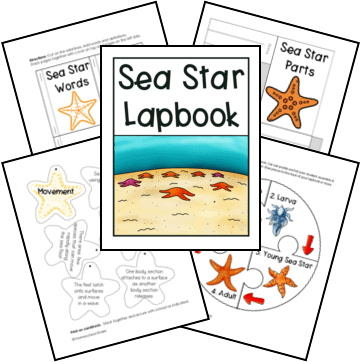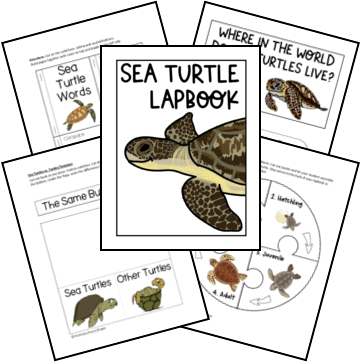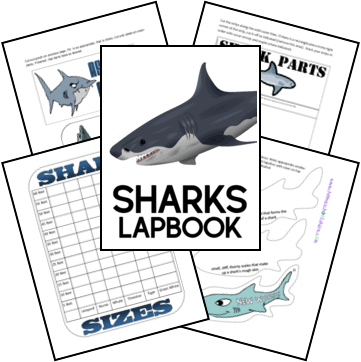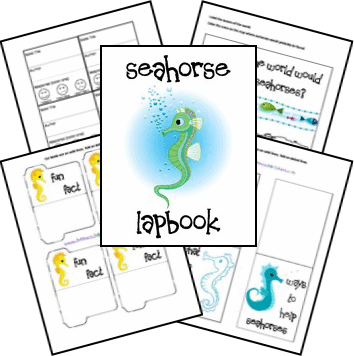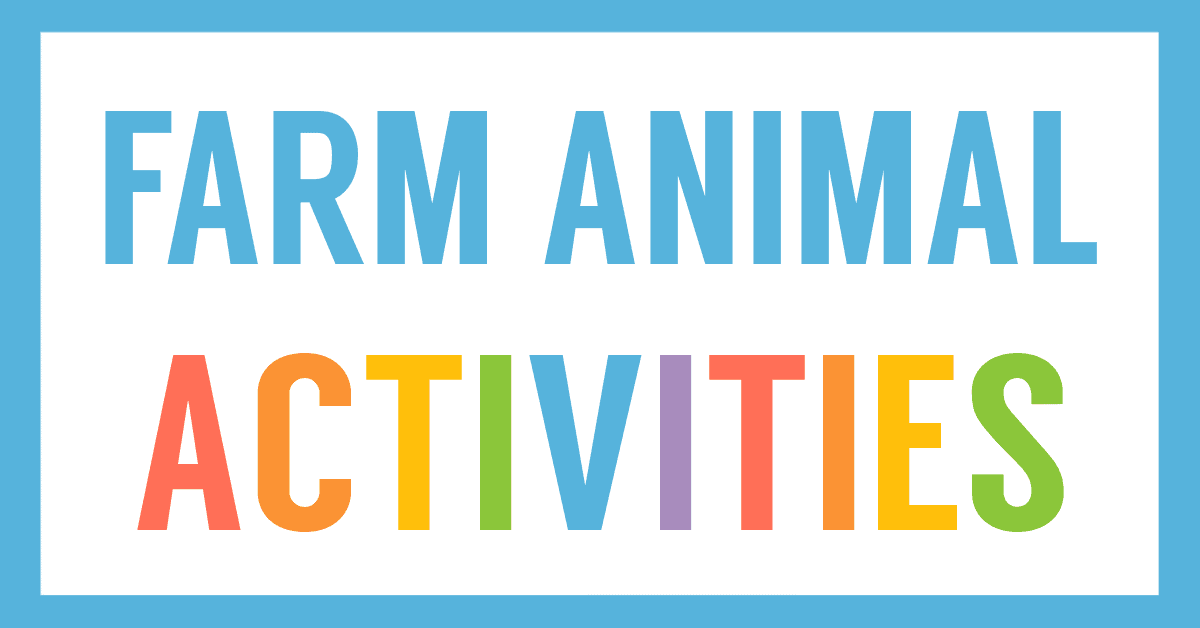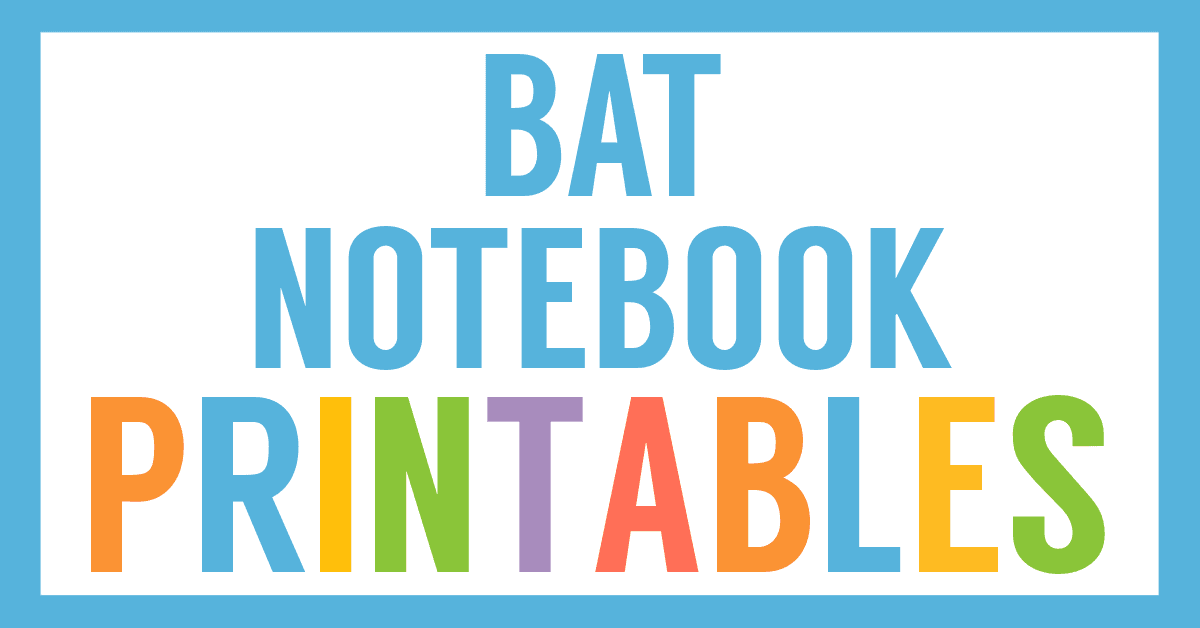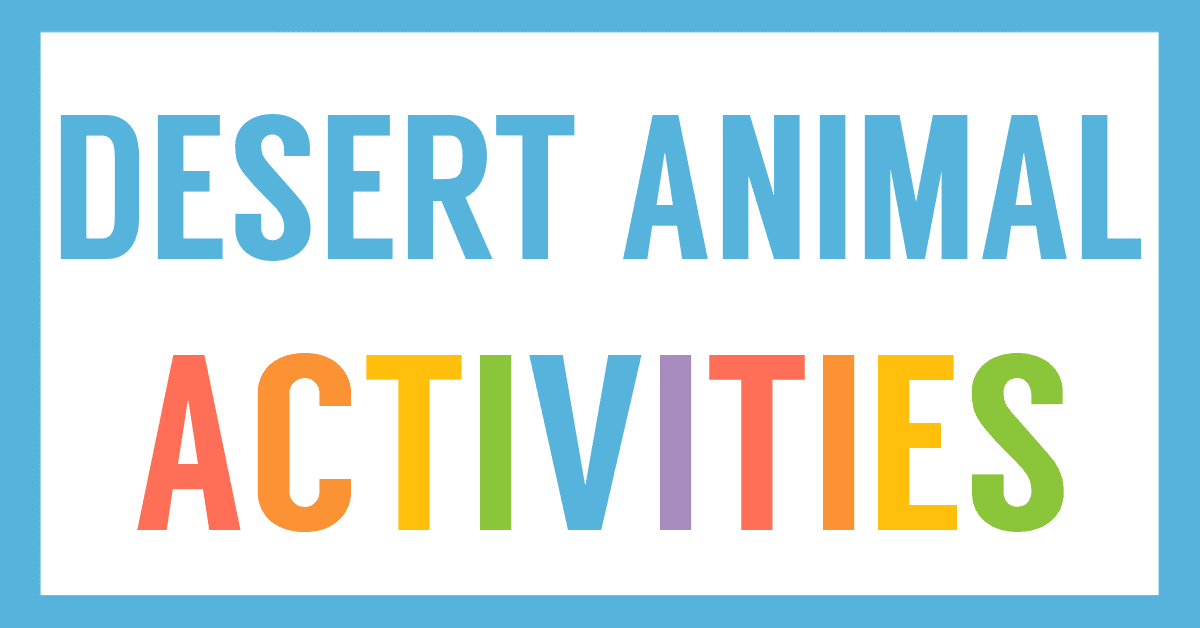Affiliate Disclaimer
We sometimes use affiliate links in our content. This won’t cost you anything, but it helps us to keep the site running. Thanks for your support.
Sea stars come in lots of different sizes and colors–there are over 2,000 different kinds! What do they eat? How does a sea star move? Where does it live? Find out the answers to these questions (and more) with our free Sea Stars Lapbook.
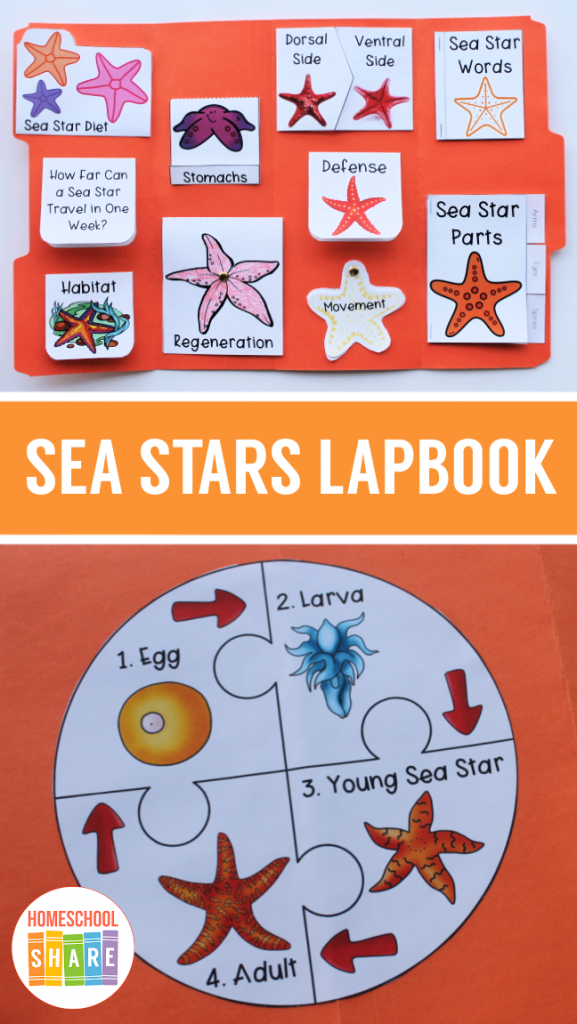
Sea Star Lapbook Information
Here are some sample lessons from the Starfish Lapbook:
Sea Stars Physical Traits (Anatomy)
Sea stars have radial symmetry, which means that their arms radiate (like the sun’s rays) from the central part of the body. They tend to have five arms or multiples of five arms. At the end of each arm is a microscopic eye which allow the sea star to only see light and dark and detect movement.
They also have spines on their skin for protection. Although there are many species of sea stars that don’t really have spines, but have a bumpy texture.
The ventral side has the “mouth” in the center and the tube feet on the arms.
Sea stars have two stomachs: the cardiac stomach and the pyloric stomach. The cardiac stomach can come out of the body and envelope the food. The cardiac stomach begins the digestion process. The food is then transferred to the pyloric stomach to be digested.
The sea star’s tube feet are located on the ventral side. They have two functions. They aid in movement and can be used to open scallops or clams.
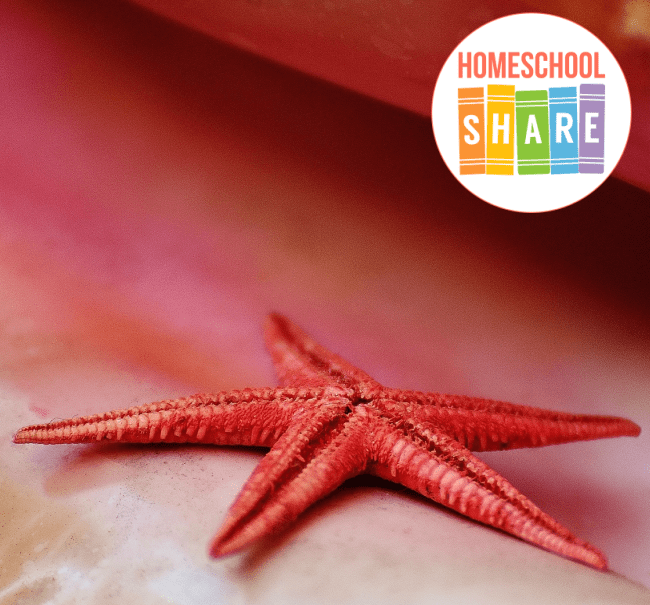
Habitat and Diet
Sea stars live in tropical, temperate and polar oceans. They are normally found around rocks and coral, but can be found living in the sand. They can live in tidal pools, rocky shores, sea grass, kelp beds, and coral reefs. Sea stars cannot live in fresh water.
Sea star are omnivores. Their diet tends to be shellfish such as scallops, oysters, clams, or plant material.
You can grab a copy of the entire Sea Stars Lapbook in an easy-to-print file at the end of this post.
Sea Stars Lapbook Printables
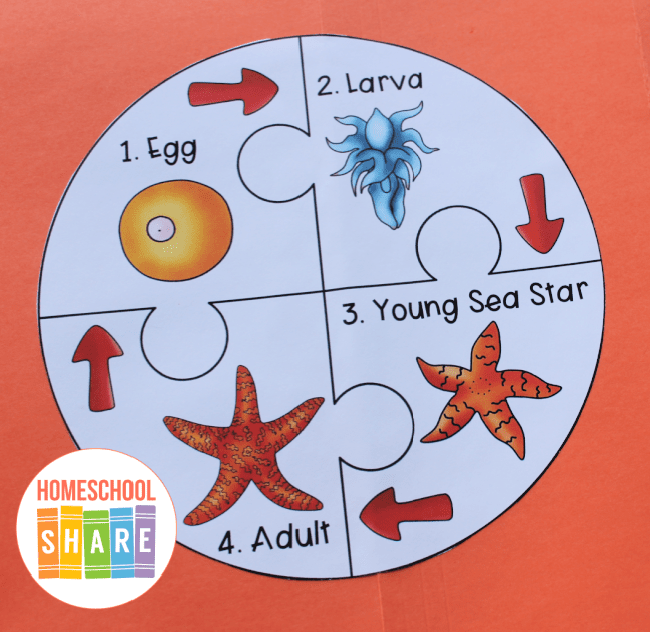
In addition to the lessons and research, this Sea Stars Lapbook includes the following mini-books:
- Sea Star Words (vocabulary) Mini-book
- Ventral Side vs. Dorsal Side
- Regeneration Simple Fold
- Sea Star Life Cycle Puzzle
- Sea Star Habitat Simple Fold
- Sea Star Stomachs Matchbook
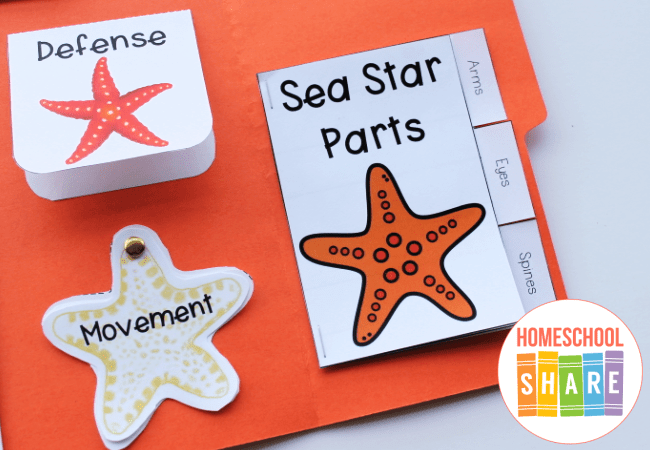
- Sea Star Diet File Folder
- Defense Simple Fold
- Travel Simple Fold
- Sea Star Movement Star Shape Fan
- Examples of Radial and Bilateral Symmetry
- Sea Star Parts Tab Book
- Sea Star Coloring Page
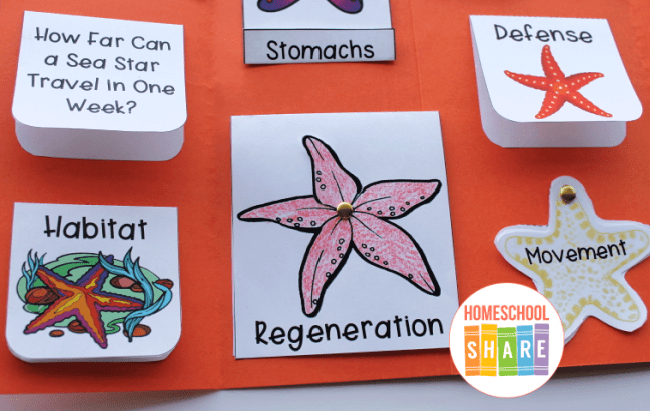
How to Get Started with Your Sea Stars Lapbook
Follow these simple instructions to get started with the lapbook.
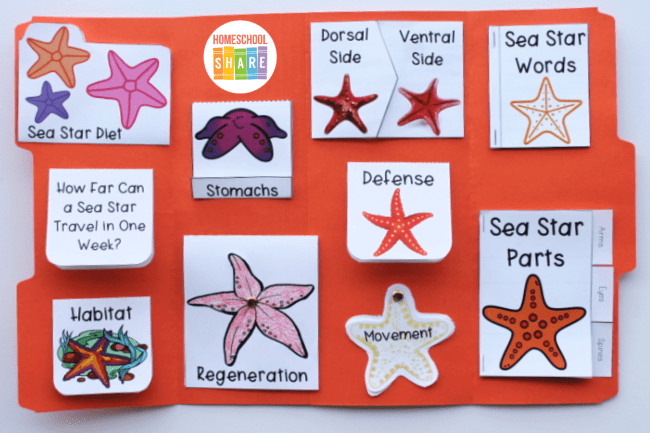
- If you want, go to your local library and check out books about sea stars (older books may be listed as starfish).
- Print the lapbook.
- Choose and prepare the mini-books you want to use with your student.
- Enjoy a week of reading and learning all about sea stars.
Download Your Free Starfish Lapbook
Simply click on the image below to access your free lapbook.
Explore Our Other Ocean Animal Lapbooks
Learn more about ocean animals with our animal lapbooks.

